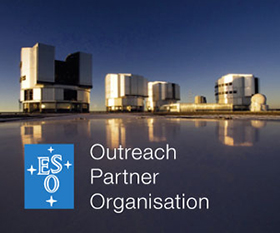
The IAstro Summer Internships Program 2023 will run between the 10th and the 28th of July.
The program involves developing a research or science communication project under the supervision of researchers and science communicators from the Institute of Astrophysics and Space Sciences (IA). Two science communication workshops and a final seminar, in which the work developed is presented, are also part of the program.
The program includes both online and in-person projects. The science communication workshops and the final seminar will be online. The in-person only projects take place in Lisbon, Porto or Coimbra, depending on the project, and the students are expected to be physically present during most days.
Participants are expected to dedicate to the program at least 6 hours/day during weekdays and attend the science communication workshops. The online sessions/meetings will take place between 9:00 and 18:00 (Lisbon time, UTC+1).
The IAstro Summer Internships Program is open to Portuguese and international Bachelor or Master students.
Students must arrange their own accomodation or transportation, if and when applicable. There are no scholarships nor allowances as part of this program.
How to apply
To apply, please send:
- your CV (maximum of two pages) including:
- academic background;
- non-academic/informal/voluntary training and/or experience attesting relevant knowledge and (hard/soft) skills;
- average of the current grades of your (bachelor or master) degree, on a 0-20 scale.
- a motivation letter answering the following questions:
- What would you like to be doing in 5 years time?
- How do you expect this internship program to contribute to your professional development and career goals?
- What motivated you to apply for these specific projects?
- your main project choice plus a second option (see list and project descriptions below).
to until the 4th of June. The results will be announced until the 16th of June.
Projects
-
- Atmospheric seeing measurements in CAUP
- Testing Einstein’s Gravity with future missions
- Why is the Universe accelerating?
- Exploring the COSMOS with Machine Learning: galaxies’ physical properties
- Deep Learning for envisioning the evolution of bulge-to-total luminosity ratio
- AMUSING ourselves with the secrets of galaxies using Integral Field Spectroscopy
- Local Galaxies as time machines: navigating biases in studying cosmic evolution
- Counting and characterising galaxies in JWST deep field observations
- Multifrequency Analysis and Machine Learning for the most powerful quasars in the Universe
- Light my MOSFIRE
- Post-starburst hunt
- Image reconstruction using convolutional neural networks and sensor acceleration and attitude
- Characterisation of a transiting exoplanet using CHEOPS photometry
- Reflectance studies of minerals on Mars
- Learning multicolor photometry of minor bodies of the Solar System
- Discover the Universe
- Contributions to research in astronomy teaching and communication
Science communication workshops
14th July: Public Engagement with Science
21st July: Present your work: body, voice, message and slides
Projects description
Atmospheric seeing measurements in CAUP

Supervision: Bachar Wehbe – IA and Ciências ULisboa
Language: English
Maximum number of students: 2
Format: In-person (in CAUP/FCUP, Porto)
Level of study: Bachelor/Master
Requirements: Basic programming and optics knowledge
In the alignment of the solar telescope PoET we are involved in, we developed an atmospheric turbulence measurements device. In the project, the student is expected to analyse the working principle of the optical instrument and define a strategy (and implement it) to use the device to measure atmospheric seeing in CAUP. The first week will be dedicated to understanding the atmospheric turbulence/seeing and how the device works and the second and third weeks will be dedicated to using the device, collecting measurements, and analyzing the data.
Testing Einstein’s Gravity with future missions

Supervision: José Ferreira, Nelson Nunes, Tiago Barreiro – IA and Ciências ULisboa
Language: Portuguese/English
Maximum number of students: 3
Format: In-person (in Ciências ULisboa, Lisbon)
Level of study: Bachelor/Master
Requirements: None
With the first (and only!) detection of a standard siren in 2016 (an event caused by the collision of two neutron stars and the consequent emission of gravitational waves and electromagnetic radiation), a new way of studying the Universe was born. Current gravitational wave observatories and those under construction will detect several of these events, with enough precision to put to the test alternative theories of gravity beyond General Relativity. In this project, the students will learn how to produce catalogs of standard sirens according to the specifications of current and future interferometers and use statistical methods to quantitatively assess how different theories will be constrained.
Why is the Universe accelerating?
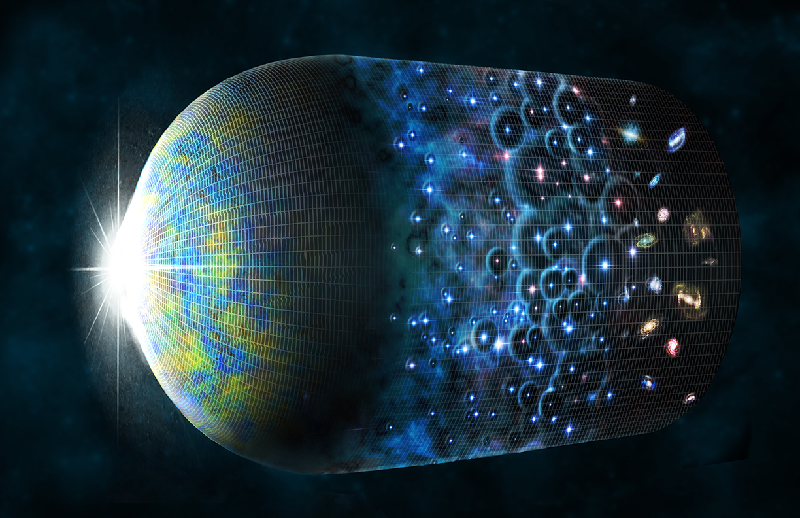
Supervision: José Ferreira, Nelson Nunes, Tiago Barreiro – IA and Ciências ULisboa
Language: Portuguese/English
Maximum number of students: 3
Format: In-person (in Ciências ULisboa, Lisbon)
Level of study: Bachelor/Master
Requirements: None
It has been fairly established that our Universe is currently undergoing an accelerated expansion. However, several inconsistencies between several cosmological observations indicate that the simplest model consisting of cold dark matter and a cosmological constant might not be the correct description. In this work, the students will take a fresh look at alternative models of dark energy and use statistical methods to compare them against current observations and evaluate which ones can be competitive with the standard ΛCDM model.
Exploring the COSMOS with Machine Learning: galaxies’ physical properties
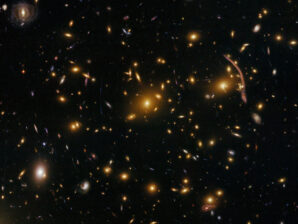
Supervision: Ana Paulino-Afonso – IA and UPorto, and Pedro Cunha – IA, UPorto and FCUP
Language: Portuguese/English
Maximum number of students: 5
Format: Online/in-person (in CAUP, Porto)
Level of study: Bachelor/Master
Requirements: Familiarity with Python and packages NumPy, Pandas, and Scikit-learn (beneficial)
Galaxies are complex systems that contain billions of stars, gas, and dust and their physical properties are determined by a variety of factors, including their mass, size, shape, and composition. Machine learning algorithms can analyze large amounts of data and identify patterns and correlations that would be difficult for humans to detect, making them an ideal tool for studying galaxies. In this internship, the students will have the opportunity to work with a large dataset of galaxy observations, including fluxes and other measurements. They will be trained in machine learning techniques, and will apply these techniques to predict physical properties of galaxies, such as stellar mass, effective radius, and age. Depending on the progress of the project, the accuracy of the predictions will be validated using independent datasets and alternative methods. This step is critical to assess the reliability and generalizability of our machine learning models, to help ensure that the results are not specific to the training dataset used, to identify potential sources of error and to improve the models’ performance.
Deep Learning for envisioning the evolution of bulge-to-total luminosity ratio

Supervision: Ana Paulino-Afonso – IA and UPorto, and Pedro Cunha – IA, UPorto and FCUP
Language: Portuguese/English
Maximum number of students: 3
Format: Online/in-person (in CAUP, Porto)
Level of study: Bachelor/Master
Requirements: Practical knowledge of Python and packages NumPy, Pandas and Matplotlib
The bulge-to-total luminosity ratio (B/T) is an important parameter that characterizes the morphology of galaxies. Understanding its evolution over cosmic time can help us gain a better understanding of how galaxies form and evolve. However, accurately measuring the B/T ratio for large samples of galaxies is a complex and challenging task. Deep Learning models can learn to recognize patterns in large datasets, making them a promising solution to this problem. In this project, we will start by collecting a large dataset of galaxy images, along with their B/T ratio measurements. We will make use of state-of-the-art deep-learning algorithms to train a predictive model that can accurately forecast the B/T ratio for hundreds of thousands of galaxies present in extragalactic surveys such as COSMOS. If successful and time allows, we will validate the accuracy of the predictions using independent datasets and/or alternative methods.
AMUSING ourselves with the secrets of galaxies using Integral Field Spectroscopy
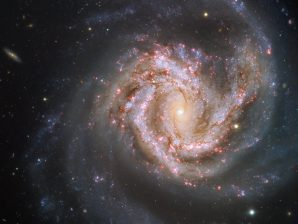
Supervision: Ana Paulino-Afonso – IA and UPorto
Language: Portuguese/English
Maximum number of students: 6
Format: Online/in-person (in CAUP, Porto)
Level of study: Bachelor/Master
Requirements: Proficiency in Excel or Topcat (beneficial)
Galaxies are complex and fascinating systems that have a wide range of physical properties, such as stellar mass, metallicity, and star formation rate. These properties vary within galaxies and are key to understanding their evolution. Integral Field Spectroscopy (IFS) is a powerful technique that allows us to measure the properties of galaxies on a local scale, providing a more detailed view of their internal structure. However, due to the high cost of IFS observations, most galaxies lack local measurements, and global measurements remain the norm. This project aims to use IFS data from the MUSE instrument installed at ESO’s Very Large Telescope to amuse ourselves with the local and global properties of galaxies. By comparing local measurements with those derived from integrated light, we will investigate the extent to which global measurements can represent the physical properties of galaxies accurately. We will also study how these properties vary with galaxy and redshift. Studies like this represent small by important steps towards improving our understanding of galaxy evolution and can impose constraints on cosmological models.
Local Galaxies as time machines: navigating biases in studying cosmic evolution
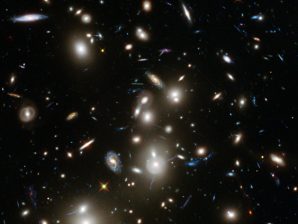
Supervision: Ana Paulino-Afonso – IA and UPorto
Language: Portuguese/English
Maximum number of students: 6
Format: Online/in-person (in CAUP, Porto)
Level of study: Bachelor/Master
Requirements: Statistics and calculus knowledge for data analysis and modelling
This project aims to simulate how a local galaxy would look in the distant Universe, including its shape and colour. We will use an adaptation of the FERENGI code to artificially redshift low-redshift galaxy images to different cosmic times, correcting for size, surface brightness, and bandpass shifting. In addition, we will use FSPS to model the colours of galaxies based on their star formation histories. By comparing the structures and spectra of galaxies at various redshifts, we aim to overcome limitations in previous large galaxy evolution studies that lacked homogeneous information on galaxies beyond redshift 1. Overall, this project will help to provide valuable insights into the biases that arise when studying cosmic evolution.
Counting and characterising galaxies in JWST deep field observations
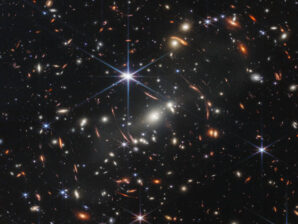
Supervision: Ana Paulino-Afonso – IA and UPorto
Language: Portuguese/English
Maximum number of students: 5
Format: Online/in-person (in CAUP, Porto)
Level of study: Bachelor/Master
Requirements: Basic shell skills to install and run software packages such as SExtractor, GALFIT, and TOPCAT
In this project, we aim to develop methods for accurately counting and characterising galaxies within JWST SMACS 0723 deep field observations. This will involve the use of advanced algorithms to detect and analyze galaxies (e.g. SExtract and GALFIT), as well as the development of new techniques for characterising their properties. It has the potential to not only advance one’s knowledge in the extragalactic field but also to provide the opportunity to discover unknown and uncharacterized sources.
Multifrequency Analysis and Machine Learning for the most powerful quasars in the Universe

Supervision: José Afonso, Israel Matute, Bruno Arsioli, Rodrigo Carvajal, Davi Barbosa, Ellie Worrel, Pedro Martins – IA and Ciências ULisboa
Language: English
Maximum number of students: 7
Format: In-person (in Obs. Astronómico Ajuda, Lisbon)
Level of study: Bachelor/Master
Requirements: Basic/generic programming skills (Python)
Quasars are galaxies that host supermassive black holes in their central region, the so called Active Galactic Nucleous (AGN). Quasars emit immense amounts of energy across the entire electromagnetic spectrum and are potential sources/counterparts of extremely energetic astroparticles. These cosmic powerhouses may play a vital role in shaping the formation and evolution of galaxies, and could regulate star formation processes. This project aims to extend the study of Rakshit (2020, arXiv:1910.10395) by incorporating multifrequency data from public repositories to the quasar catalog. The students will explore potential correlations between multifrequency data and parameters derived from spectral analysis (such as the quasar’s black hole mass), using machine learning and exploratory techniques, to gain insights into the underlying astrophysical phenomena and try to develop models for predicting quasar properties based on multifrequency observations. In the 1st phase of the project, the students will access public data repositories to gather multifrequency data for the quasars in the Rakshit (2020) catalog. They will learn how to use Python to handle the dataset, derive new parameters (feature engineering) and explore visualization strategies using Python. In the 2nd phase, the students will be introduced to machine learning techniques, preprocess the dataset (including data cleaning, normalization, and feature selection) and train machine learning regression models to predict parameters such as black hole mass. By investigating the correlations between multifrequency data and spectral parameters, the students will contribute to the understanding of quasar properties, the underlying astrophysical processes, and will be invited to think about possible observational biases that could affect the results.
Light my MOSFIRE
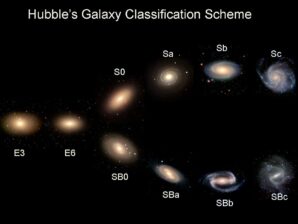
Supervision: Ciro Pappalardo and Henrique Miranda – IA and Ciências ULisboa
Language: English
Maximum number of students: 5
Format: Online (with afternoon meetings)
Level of study: Bachelor
Requirements: Python knowledge
The ultimate goal of astrophysics is to construct a complete picture of galaxy evolution. Despite many notable achievements, we are still far from a self-consistent model to describe the diversity of galaxies seen in different epochs. The emission observed combines stars, gas, and materials reprocessed by dust. To fully model this emission, it is fundamental to include all these mechanisms in a consistent framework. This task is very complicated as the scale of each component can vary dramatically along a galaxy’s life. Our Institute perfected in recent years an innovative tool for interpreting a spectrum combining stellar and nebular emissions, FADO, not the music but an acronym for Fitting Analysis using Differential Optimization Algorithms. First tests, applied to a large sample of nearby galaxies, have shown promising results, allowing the extension of this project towards higher distances. The goal of this internship is to study such components in a sample of higher redshift galaxies taken from the MOSFIRE Deep Evolution Field (MOSDEF) survey, a program to observe the stellar, gaseous, metal, dust, and black hole content of 1500 galaxies when the Universe was 1.5 to 4.5 billion years old. Data from this survey, released in 2021, provides a treasure trove for galaxy evolution studies. With such dataset and applying FADO, the project will investigate the evolution of stellar and nebular emissions at different galaxy epochs.
Post-starburst hunt
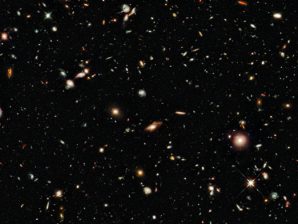
Supervision: Ciro Pappalardo and Israel Matute – IA and Ciências ULisboa
Language: English
Maximum number of students: 5
Format: In-person (in Obs. Astronómico Ajuda, Lisbon)
Level of study: Bachelor
Requirements: Python knowledge
The latest galaxy evolution models, confirmed by observations, have shown that the number of stars produced in the Universe has not been constant. In the first 5 billion years, galaxies formed stars at a growing rate, which declined quite rapidly between 5 and 9 billion years ago. The signature of this event results in a dichotomy between galaxies, where we can identify a sample of objects with ongoing star formation (blue star-forming sequence) and another category with low or even absent star formation (red passive). Intermediate between these two categories is a subsample occupying the so-called green valley, formed by galaxies migrating from the blue star-forming cloud to the red passive through quenching. The timescale of the decline in star production is uncertain: it could be a secular process, which takes several billion years, producing a smooth trend, or it could be an abrupt mechanism, followed by a passive evolution of the last generation of stars left. In this last case, galaxies could undergo a ‘post-starburst’ phase, with the co-existence of old and young stellar populations. The signature of these different phases is embedded in the light of these galaxies, and various selection criteria have been set up to identify such subsamples. This project compares the outcome of various selection methods applied to a well-known field observed at different wavelengths. This analysis will identify post-starburst systems, characterizing their physical properties and the quenching timescale.
Image reconstruction using convolutional neural networks and sensor acceleration and attitude

Supervision: Ricardo Gafeira – IA and FCTUC
Language: Portuguese/English
Maximum number of students: 1
Format: In-person (in OGAC, Coimbra)
Level of study: Bachelor/Master
Requirements: Experience in Python
In this project, the student will develop a simple convolutional neural network to perform image reconstruction of images collected during the launch of a rocket/spacecraft. The model will be initially tested using synthetic data and later tested using data collected by payload Dumbledore that will fly in the EuRoC – European Rocketry Challenge on board of the FENIX rocket.
Characterisation of a transiting exoplanet using CHEOPS photometry

Supervision: Nuno M. Rosário, Sérgio Sousa and Nuno Santos – IA and FCUP
Language: Portuguese/English
Maximum number of students: 2
Format: In-person (in CAUP, Porto)
Level of study: Bachelor
Requirements: Basic Python knowledge, attending bachelor in Physics or Astronomy
The objective of CHEOPS is to achieve a detailed characterisation of known exoplanets through high-precision photometric observations, that is, to determine their size, estimate their mass, density, composition and, therefore, their formation. It was launched on the 18th of December 2019 with scientific observations starting in April 2020. In this project, the students will learn how to use the pycheops Python tool to download data from the CHEOPS observations and analyse the light curves of a transiting hot Jupiter, a category of massive planets orbiting very close to their star. They will learn the physics behind the detection of a transit and the challenges of light curve detrending and analysis. Finally, they will derive the orbit and planetary parameters from the transits by fitting a simple transit model and compare them with published results.
Reflectance studies of minerals on Mars

Supervision: Pedro Machado – IA and Ciências ULisboa, and Pedro Pina -IA and FCTUC
Language: Portuguese
Maximum number of students: 2
Format: In-person (in OGAC, Coimbra)
Level of study: Bachelor/Master
Requirements: Basic knowledge of astronomy/astrophysics
We propose to use OMEGA spectra datasets from Mars Express to detect and characterize specific minerals in old fluvio-marine systems on Mars surface. The methodology proposed is based on the diverse reflectance properties of the minerals we intend to study. Spectroscopic analyses will be implemented on selected datasets. The mineralogic studies will integrate the topographic knowledge of the selected regions, the state-of-the-art information about the atmosphere lower layers and local radiative transfer, and the spectral mineralogic reflectance “finger print”.
Learning multicolor photometry of minor bodies of the Solar System
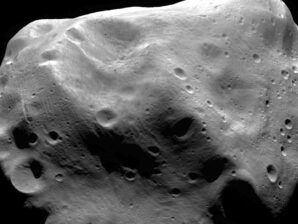
Supervision: Nuno Peixinho – IA and FCTUC, and Pedro Lacerda – IA and IPN
Language: Portuguese/English
Maximum number of students: 2
Format: In-person (in OGAC, Coimbra)
Level of study: Bachelor/Master
Requirements: Basic knowledge of astronomy/astrophysics
The Solar System is populated by a huge variety of minor bodies. Asteroids and comets are largely known, but other classes of minor bodies like Near-Earth Objects, Jupiter Trojans, Centaurs, and Kuiper Belt Objects, in which several of them subdivide in other classes, do exist, some even in very large numbers. Spectroscopic studies of the surfaces of these objects are only accessible for the brightest few, whereas multicolour photometry is achievable for most of them. During the internship, the student will learn how to reduce image data of minor bodies of the outer Solar System and perform multicolor photometry using IRAF, PyRAF, and Python, dealing with aperture correction techniques to improve the signal to noise ratio and photometric calibration – determining the atmospheric extinction, the colour terms, and the standard stars magnitudes, and also using relative magnitudes. Upon the determination of the photometric colours, the student will learn how to perform basic statistical analysis of the properties of these objects.
Discover the Universe
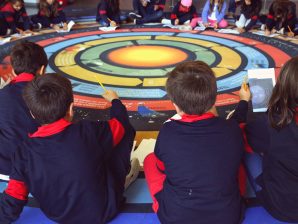
Supervision: Ricardo Cardoso Reis and Filipe Pires – IA and Porto Planetarium – CCV, UPorto
Language: Portuguese/English
Maximum number of students: 2
Format: Online (with afternoon meetings)
Level of study: Bachelor
Requirements: Basic knowledge in astronomy
Science and technology are increasingly a part of our everyday lives, but fewer and fewer people actually understand them, which makes science communication’s role more and more important for the general public. However, the “general public” is just a generic “umbrella” designation, under which we engulf individuals with different knowledge, education, needs, preferences and limitations. So, when we start the process of creating a science communication activity, after defining what we intend to communicate – the goals of the activity – our first priority must be the definition of the audience: Who are they? Do they have any previous knowledge of the subject? What are their limitations? Are they a captive audience? Do they have any preconceptions about the subject of the activity? In this internship, you will be asked to design (and if possible, implement) a science communication activity, targeted at the public of the Porto Planetarium, such as a planetarium show, an exhibition, social media content, educational material, etc.
Contributions to research in astronomy teaching and communication

Supervision: Ilídio André Costa – IA and Porto Planetarium – CCV, UPorto
Language: Portuguese
Maximum number of students: 2
Format: Online (with afternoon meetings)/in-person (in CAUP, Porto)
Level of study: Bachelor/Master
Requirements: None
Participants will have the opportunity to carry out exploratory investigative projects in the field of astronomy teaching or communication. The project will involve the processing, analysis and communication of data already collected during IA activities. Elementary statistical analyses will be used in the data processing, such as the creation of tables, graphs and obtention of numerical indicators to present information about the tendency and dispersion of the data using, for example, the average and the standard deviation. The work plan involves 1) the selection of the IA data to work with, 2) data processing/analysis, 3) discussion of the results and conclusions and 4) presentation of the project.
What the participants say…
“It gave me perspective about the research area and made it very appealing. It introduced me to new tools, challenged me in a very good way and it was an amazing opportunity to learn about a very interesting theme directly from experts.“
“Learned a lot on several topics of astronomy and very helpful communication skills and tips which will certainly be useful in the future.”
“It was the most fun I ever had doing work, I learned a lot in 3 weeks and made me feel capable of facing more challenges and it also motivated me to learn as much as I can.“

